Canvas and Panel Sizes and Proportions
The following material discusses how to select the correct proportion canvas or panel for the subject of the painting.
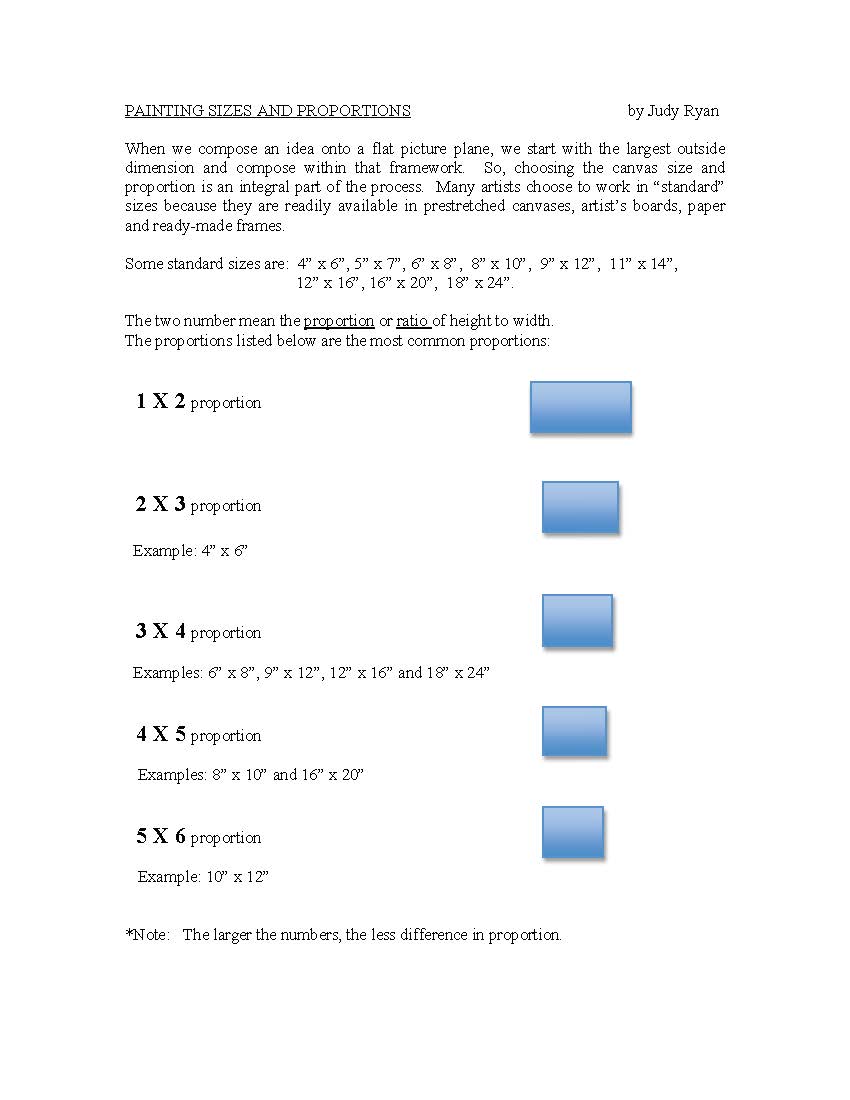
When calculating these proportion, multiply both the length and the width by he same number. For example:
- 1 X 1 proportion (multiplied by 6) is 6 x 6
- 1 X 2 proportion (multiplied by 6) is 6 x 12
- 2 X 3 proportion (multiplied by 6) is 12 x 18
- 4 X 5 proportion (multiplied by 6) is 24 x 30
- 5 X 6 proportion (multiplied by 6) is 30 x 36
1 X 2 proportion refers to the shorter side being twice the length of the longer side. This proportion, when horizontal, is the classic landscape proportion. When this proportion is vertical, it has been used for full-length portraiture.
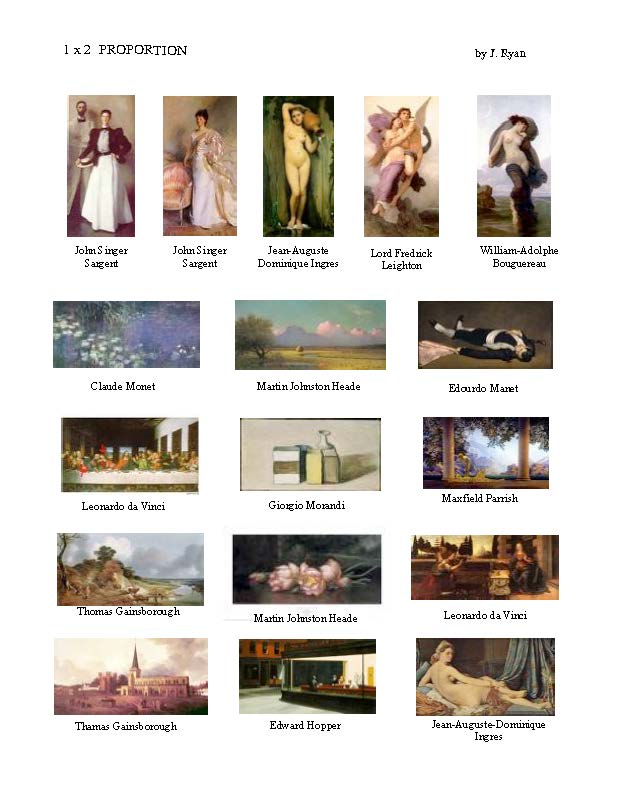
2 X 3 proportion is the next longest rectangular size. This proportion size can be used for many different subjects (as seen below) — landscape, still life, figures in interiors, full length portraits. Edgar Degas and Marie Cassatt employed this proportion because many artists, at that time, were very interested in the compositions of the Japanese screen and brush painters. Observe how the space in their paintings seem to be tipped forward slightly. It is interesting to note that DaVinci’s Mona Lisa is this proportion.
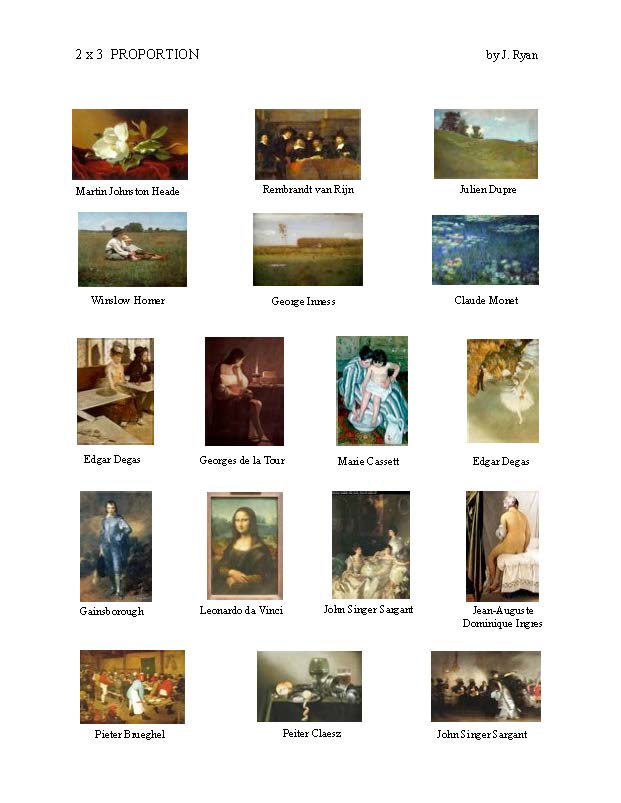
3 X 4 proportion is more square. This proportion has been used by many famous artists. Rembrandt preferred this proportion for designing his paintings of interiors. Corot used this proportion for his landscape paintings.
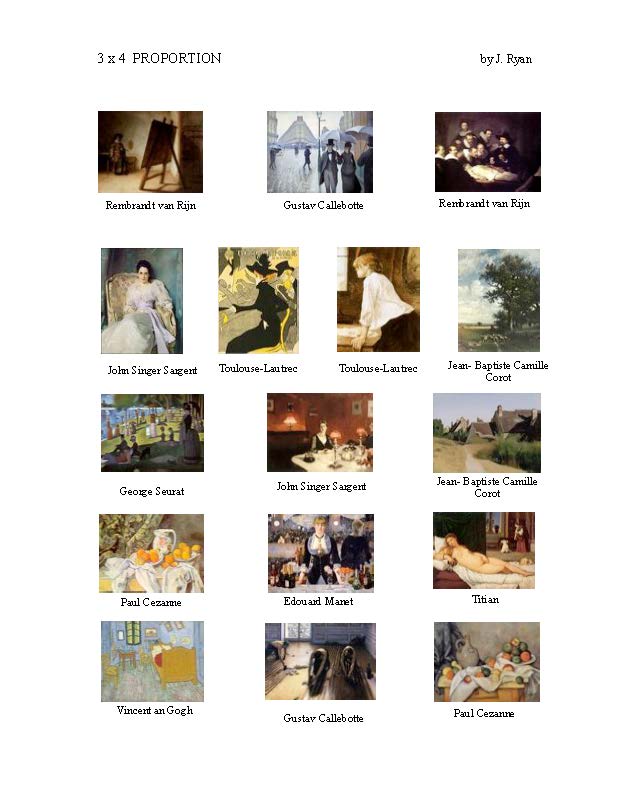
4 X 5 proportion is more square and is suitable for portrait. This proportion was used to design the famous portraits of Rembrandt, Vermeer, Degas, Alexander and Paxton.
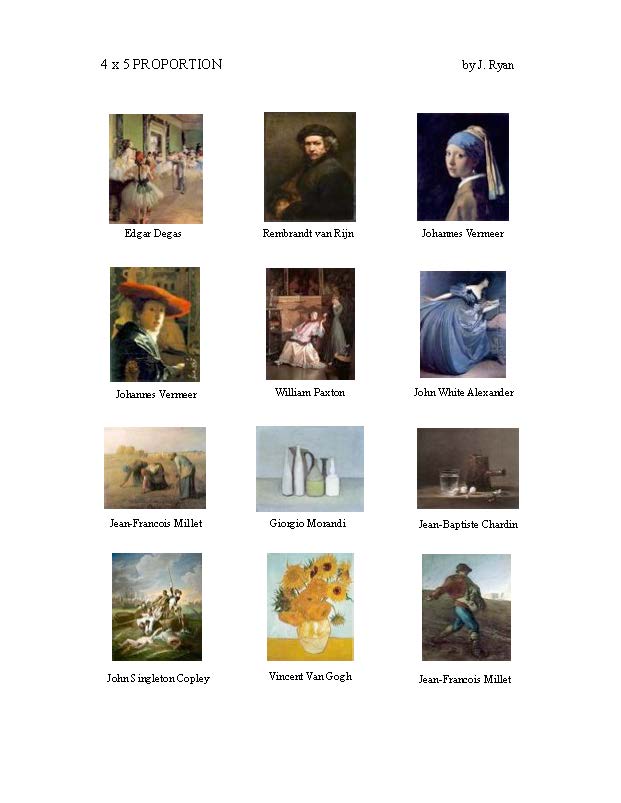
5 X 6 proportion is almost square and is a very classic proportion. The famous French still life painter, Jean-Baptiste Chardin favored this proportion for his paintings and Johannes Vermeer preferred this proportion to compose his paintings of interiors.
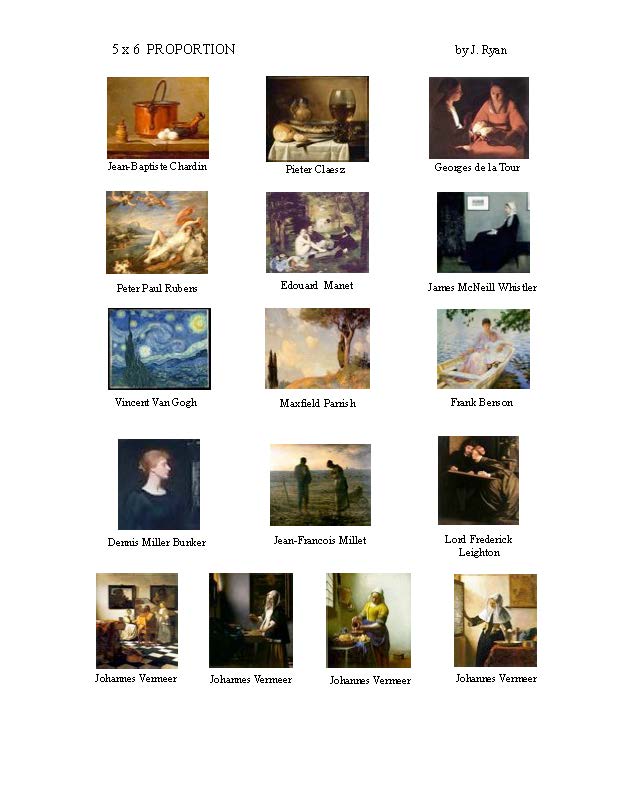
Lastly, 1 X 1 proportion refers to the square composition. It is interesting to note that the famous painting of the Boit Sisters by John Singer Sargent at the Museum of Fine Arts, Boston is painted on a square canvas.
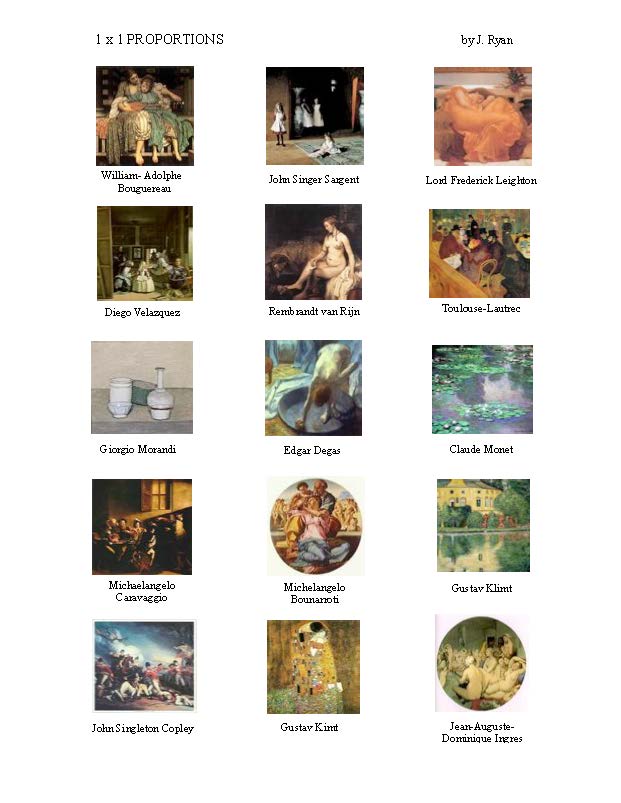
As can be seen, the proportion of a canvas is essential to the design of the composition. Selecting the proportion of the canvas is the subjective decision of the artist. A good design does not make the viewer aware of the outside proportions of the canvas. Today, artists find a “standard” size that they like to compose in. This makes it easier and more economical when ordering frames or purchasing ready-made canvases or panels.

